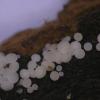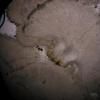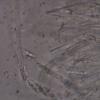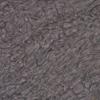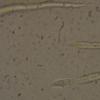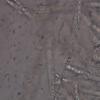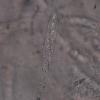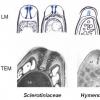
25-11-2025 11:03
Mick PeerdemanHi all,One of my earliest microscopy attempts, so

24-11-2025 15:23
Arnold BüschlenHallo, auf einer offenen Kiesfläche am Rande ein

23-11-2025 11:16
Bohan JiaHi, I found small discs growing on dead stem of

21-11-2025 10:56
 Christopher Engelhardt
Christopher Engelhardt
Very small (~0,5 mm) white ascos, found yesterday
Hymenoscypha on Betula
Kosonen Timo,
06-11-2015 12:13
 A bit lost with these bald-ones.
A bit lost with these bald-ones.Spores +- fusoid, with prominent septa already in ascus. Often constricted at septa. Mature spores with 1-3 septa. Large vacuoles. Spores often disintegrate in two (after some physical pressure). Size 15-22 x 3-5(6) um.
Paraphyses cylindrical, with large refractive vacuole in the upper part.
Asci often over 100 um in length, apical part blue in MLZ. Croziers not observed.
On dead Betula in southern Finland. A fresh and "good-looking" specimen.
Feel free.
Timo
Hans-Otto Baral,
06-11-2015 12:58

Re : Hymenoscypha on Betula
Hi Timo
do you haver a photo of the blue apical ring? I am not sure whether to put this alternatively in Calycina. You have nice living asci, is there also a photo where spore septation is visible inside of them?
Zotto
do you haver a photo of the blue apical ring? I am not sure whether to put this alternatively in Calycina. You have nice living asci, is there also a photo where spore septation is visible inside of them?
Zotto
Kosonen Timo,
06-11-2015 13:21
Hans-Otto Baral,
06-11-2015 13:35

Re : Hymenoscypha on Betula
Yes, of course, but what is needed is the shape of the ring. Your iodine is perhaps a bit diluted, or it could be that the ring is hemiamyloid and you suppress the reaction by the chloral hydrate in MLZ. Therefore I use Lugol.
I guess the ring is of the Calycina type, so it isn't a Hymenoscyphus.
"Inside asci" is not enough, it is important to look the spores inside living asci. You have a turgescent ascus on your photo but cut away... Hymenoscyphus ejects always non-septate spores, calycina often 1-septate.
I guess the ring is of the Calycina type, so it isn't a Hymenoscyphus.
"Inside asci" is not enough, it is important to look the spores inside living asci. You have a turgescent ascus on your photo but cut away... Hymenoscyphus ejects always non-septate spores, calycina often 1-septate.
Kosonen Timo,
06-11-2015 13:43

Re : Hymenoscypha on Betula
Yes, diluted they are, since I added MLZ to a water mount. A pure MLZ preparate should do the thing. And why not do it in Lugol too. Also, I'll look for more prime asci. ..I'll get back to this.
T
T
Lothar Krieglsteiner,
06-11-2015 14:01

Re : Hymenoscypha on Betula
Hi Timo,
"the thing" is different if you use Melzer or Lugol (alternatively Barals solution).
Melzer contains chloral hydrate and kills the cells. The hemiamyloid reaction that is a vital reaction is suppressed by Melzer. So you should use only IKI (Lugol, Barals solution) and no Melzer.
Regards from Lothar
Kosonen Timo,
10-11-2015 13:12
Hans-Otto Baral,
10-11-2015 13:16

Re : Hymenoscypha on Betula
Yes, now the ring shape is much better seen. It is clearly not of the Hymenoscyphus type but most likely of the Calycina type.
The differences are illustrated below. Surely they are not always as different as there, and both red and blue reactions occur in all these groups.
So we must search in the genus Calycina.
The differences are illustrated below. Surely they are not always as different as there, and both red and blue reactions occur in all these groups.
So we must search in the genus Calycina.
Kosonen Timo,
20-11-2015 08:29

Re : Hymenoscypha on Betula
All right. With the spore size and shape there appears to be only a few alternatives. On flanks there are no structures even resembling hairs (end-cells). Calycina lactea appears to fit well. Paraphyses with large vacuoles fits well too.
Specimen is still alive and kicking,
Timo
Specimen is still alive and kicking,
Timo
Hans-Otto Baral,
20-11-2015 10:13

Re : Hymenoscypha on Betula
Yes indeed, Calycina lactea is a great idea!


